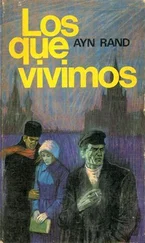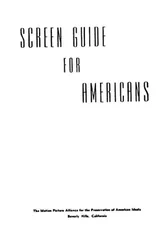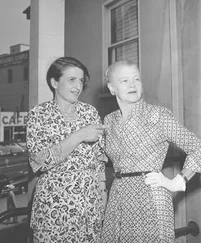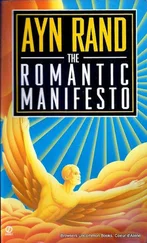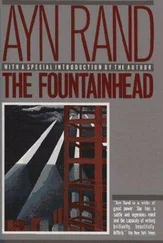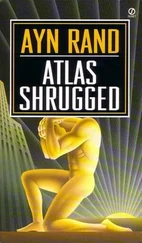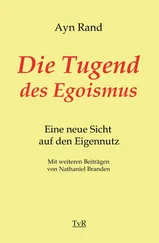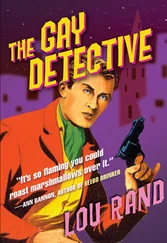Preface to the Revised Edition
This revision adds two short stories to the collection, thereby placing all six short stories by Ayn Rand in one volume. The previously unpublished story, "The Night King," has been included, as well as the story "The Simplest Thing in the World," reprinted from The Romantic Manifesto. The first of these, most likely written in 1926, seems to be her first attempt at fiction in English. The second, written in 1940, demonstrates the command of the English language she achieved over this fourteen-year period.
Nearly a decade of organizing and cataloging her papers by the Ayn Rand Archives has allowed some refinement in dating the original manuscripts, which is reflected in this edition. References to the sales figures of her novels have been updated to the present day. Other than that, Leonard Peikoff's Introduction and prefaces are exactly duplicated from the previous editions of The Early Ayn Rand.
Richard E. Ralston Revision Editor August 2004
In 1926, Ayn Rand was a twenty-one-year-old Russian immigrant to America struggling with her first short story in English; she was barely able to speak the language, let alone handle complex ideas or project a convincing hero. In 1938, a mere twelve years later, she was writing The Fountainhead, in full command of her distinctive philosophy, aesthetic approach, and literary style. A progression such as this represents an astonishing intellectual and artistic growth.
The present book is an anthology of Ayn Rand's fiction from this early period, arranged chronologically. I have decided to publish this material because I believe that admirers of Miss Rand will be interested to learn by what steps she developed her literary abilities. They can now see the steps for themselves.
Only one of the pieces (Think Twice) can be considered finished, mature work. The others are offered not as finished ends-in-themselves, but primarily for the light they shed on Ayn Rand's development during her most critical formative decade as a writer. None of the pieces has been published before, nor did Miss Rand intend to publish them.
The novels of the mature Ayn Rand contain superlative values that are unique in our age. The Fountainhead and Atlas Shrugged offer profound and original philosophic themes, expressed in logical, dramatic plot structures. They portray an uplifted vision of man, in the form of protagonists characterized by strength, purposefulness, integrity — heroes who are not only idealists, but happy idealists, self-confident, serene, at home on earth. The books are written in a highly calculated literary style intent on achieving precision and luminous clarity, yet that style is at the same time brilliantly colorful, sensuously evocative, and passionate. Just as Ayn Rand's philosophy, Objectivism, rejects the mind-body dichotomy, so her art sweeps aside the false alternatives this dichotomy has spawned: her novels prove that one can unite philosophy and suspense thrillers, art and entertainment, morality and practicality, reason and emotion.
She could not do all of the above, however, at the beginning. She had to create her own abilities gradually, by a prodigious effort.
What kinds of themes concerned her as a young woman, before she could deal with the deeper issues of ethics or epistemology? What kinds of stories did she tell before she could invent complex plots involving an entire society or even the whole world? What kinds of characters did she write about before she was able to project Howard Roark or John Galt? How did she write in these years, when she was first learning the craft?
The eleven selections in this book answer such questions. They exhibit Ayn Rand's continuous growth in every area: depth of theme, ingenuity of plot structure, stature of hero. Most of all, they exhibit the maturation of her style, from the broken English of "The Husband I Bought" to the power and poetry of The Fountainhead.
Miss Rand's development seems to fall into three rough stages, reflected in the three parts of this anthology.
Part I covers the 1920s and includes her earliest fiction in English. The short stories from this period are a beginner's exercises written as literary practice, and never meant for any audience.
Part II covers the early 1930s and represents Miss Rand's first professional work. It includes a lengthy synopsis of a movie original (Red Pawn); two excerpts from the manuscript of We the Living that were cut before publication; and an early stage play (Ideal) which, though finished work, is not fully consonant with Miss Rand's later viewpoint.
Part III covers the late 1930s and represents Ayn Rand's first mature work. It includes an intriguing stage play, the philosophical murder mystery Think Twice; and two sets of excerpts from The Fountainhead manuscript that were cut before publication. One of these tells the story of Roark's first love affair, before he met Dominique.
An early short story has been omitted from this collection, along with several screenplays (adapting other authors' stories) from her days in Hollywood, some scenarios for the silent screen, and a version of We the Living written for the stage. Aside from these items, there is no more of Ayn Rand's fiction that remains unpublished. (There are no excerpts from the Atlas Shrugged manuscript long enough to warrant publication.)
By the nature of this anthology, most of the material is imperfect, unedited and/or undeveloped Ayn Rand. But it is still Ayn Rand — and that is the second reason for publishing it. Despite all the flaws, despite everything she has still to learn, her vision of man and of life, and even some of her power to convey that vision in words, are there at the beginning. They are real, they are able to break through, to be felt, to haunt us. For those who admire her work, as I do, this is reason enough to grasp at these early pieces.
I first met Ayn Rand in 1951 at her home in California. She was writing Atlas Shrugged at the time; I was a pre-medical student who loved The Fountainhead and was brimming over with philosophical questions to ask her about it. That meeting changed my life.
Ayn Rand was unlike anyone I had ever imagined. Her mind was utterly firsthanded. On intellectual issues, she said what no one else said or perhaps had ever even thought, but she said these things so logically — so simply, factually, persuasively — that they seemed to be self-evident. And she was passionate about ideas; she radiated the kind of intensity that one could imagine changing the course of history. Her brilliantly perceptive eyes looked straight at you and missed nothing; neither did her methodical, painstaking, virtually scientific replies to my questions miss anything. She convinced me that night that philosophy is a science, with objective, provable answers to its questions; it is the science that moves the world, she argued, whether men acknowledge the fact or not. It did not take me long to give up medicine and decide on philosophy as a career.
As the years passed, I came to work closely with Miss Rand, first as an informal student of hers, then as a writer and lecturer on her ideas. The two of us regularly talked ideas, not infrequently for twelve hours (or more) at a stretch. I learned more about philosophy listening to her than I did from ten years in graduate school getting a Ph.D. in the subject.
Not long after I met Miss Rand, she let me read the two plays in the present collection, Ideal and Think Twice; she was pleased with both and hoped to see them produced one day. (This, I think, is why she never tried to have them published.) I also came to read the short story "Good Copy" and to hear Miss Rand's analysis of it; she regarded this piece as a worthy, though flawed, attempt by a beginning writer. Of the rest of this collection, I read nothing at all during Miss Rand's lifetime (though I heard from her in passing about a few items, which she regarded as ancient history). I was astonished, after her death, to find so much fiction that was new to me in her "trunk."
Читать дальше

